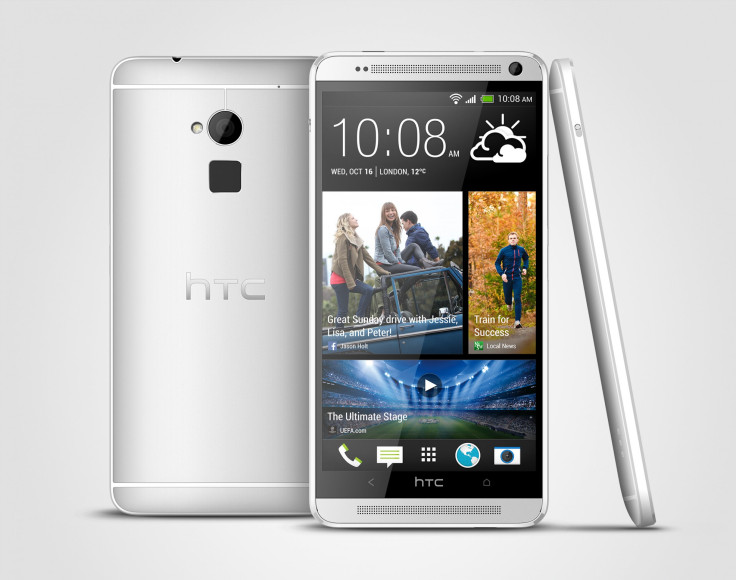HTC One Max Reviews Are In, And They're Not Good

HTC has revealed the One max, a companion to its flagship with a larger screen and specs to match. So far, reviewers say the new form factor does little to improve on the One brand this time around -- and may even go so far as to damage public perception of the struggling Taiwanese manufacturer.
Several reviews questioned HTC’s decision to place a fingerprint sensor on the rear of the HTC One max, one that requires a vertical swipe to unlock. Some grumbled about the removable rear cover, which provides access to microSD and Micro-SIM card slots, but not to the HTC One max’s battery, and the overall build quality of the phablet, in sharp opposition to the unibody construction of the HTC One.
Most reviews found the HTC One max’s fingerprint sensor poorly placed and frustratingly unhelpful. The HTC One max requires the push of a power button before the fingerprint sensor can unlock the screen, which many reviewers noted was one of several poor ergonomic decisions HTC made with the One max. CNET editors noted that the fingerprint sensor’s placement, on the rear of the HTC One max, “will feel like a strange location for many people.”
The Verge says the vertical swipe gesture used to unlock the HTC One max is “problematic, since your hand’s natural position is at an angle to the sensor, demanding an unnatural and uncomfortable motion to activate it.” Fingerprint sensors are developed to speed up the process of unlocking a phone, but the HTC One max unfortunately does the opposite. While Pocket-lint's review gave the HTC One max’s fingerprint sensor a success rate higher than most others, of roughly 90 percent, the reviewer said that “it’s irritating that you have to press the standby button before you can swipe to unlock. ... The fingerprint scanner on the iPhone 5S is much better.”
Several praised the larger speakers that HTC fit into the One max, as well as some of the updates found in Sense 5.5 (coupled with the Android operating system, version 4.3). BoomSound, two pairs of front-facing speakers with built-in amplifiers, which were a major advantage of the HTC One, is taken one step further in the One max.
Also, HTC’s Super LCD3 technology makes for a big, beautiful screen -- an absolute necessity for a phablet. The HTC One max sports a 5.9-inch, full HD (1080p x 1920) screen, which is larger than the HTC One while maintaining the same resolution. That makes for 373 pixels-per-inch (ppi), which is lower than the One’s 469 ppi and slightly less impressive as far as resolution is considered. Pocket-lint noted that the screen on the HTC One max compared unfavorably to the original One, which “gives you cleaner, brighter whites."
The HTC One max features the same storage options as its flagship predecessor, with 32GB and 64GB options, with the addition of a MicroSD card slot for additional storage. The HTC One max also features the same 2GB of RAM and Snapdragon 600 processor as the One, which was released in February, less powerful specs than those found on competitors. CNET said that any “larger-than-life phone needs to come with more than merely a humongous display, especially if it wants to fend off potent gadgets such as the Note 3.”
Reviewers pointed out that the HTC One max’s 4-megapixel main camera was a disappointment, and The Verge said that “given the size of the One max, many might be disappointed not to see HTC add in a dedicated camera button.”
Pocket-line notes that the rear cover, while removable, lacks access to the battery, which is sealed on the HTC One max. HTC would have been better to give the One max pin-access holes, like the one found on the HTC One. The review notes that the rear cover is hard to put back on after removing, and makes the overall design of the HTC One max less tidy. "For many, the original HTC One will be the better option," they say.
Engadget was more blunt in their preliminary HTC One max hands-on:
Our sample unit is coming apart at the seams. The removable back cover doesn't fit properly; the power button often jams; there's a visible gap between the display and the bezel on the right-hand side, and the optional $90 Power Flip Case looks as if it was designed for some other phone, because its front flap fails to fully cover the One Max's enormous display.
Ouch.
© Copyright IBTimes 2024. All rights reserved.




















